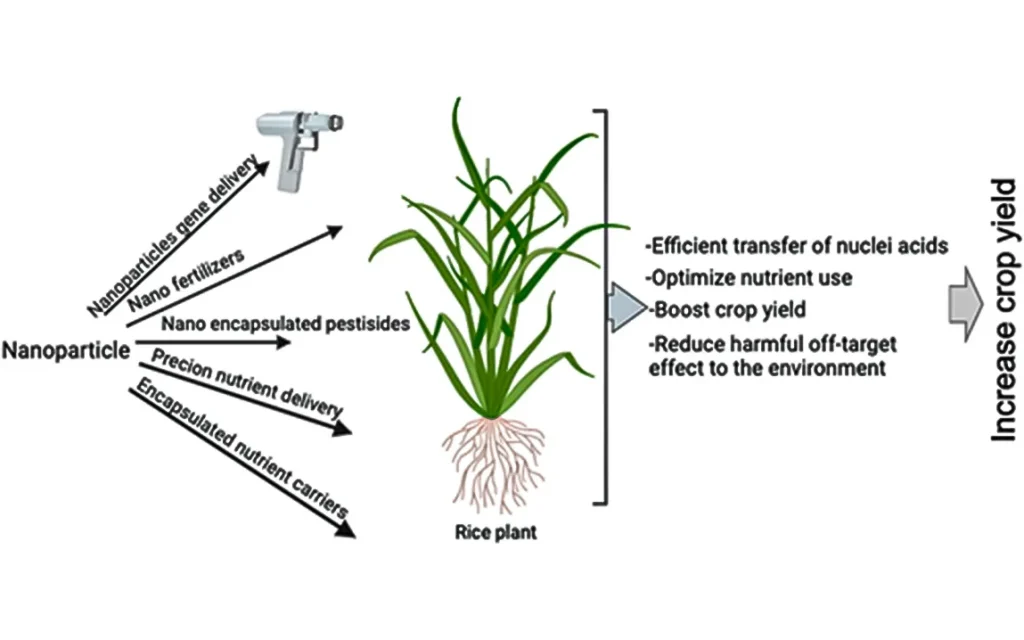In the constantly evolving landscape of agricultural biotechnology, there is a novel approach that is being developed: nanoparticles for genetic material delivery into plants through their roots. The new method is promising to revolutionize plant genetic engineering by providing an efficient and less disruptive process compared to current methods.
The Challenge of Plant Genetic Transformation
Conventional techniques of transferring new genetic material to plants, including Agrobacterium-mediated transformation and biolistic particle delivery, have played a key role in crop improvement. These methods, however, have their drawbacks. Agrobacterium-mediated transformation is species-specific and can be inefficient for some crops. Biolistic techniques, which are based on firing DNA-coated particles into plant tissues, result in tissue damage and are less accurate.
Nanoparticles: A Novel Solution
Nanoparticles, with their infinitesimal size and tailor-made properties, represent a hopeful solution to these problems. These small particles are able to pass through the plant cell wall—a daunting barrier in conventional genetic engineering—without inflicting serious damage. By designing nanoparticles to contain genetic material, researchers can insert new genes into plants with more ease and accuracy.
Root Uptake: A Natural Pathway
Plants uptake water and nutrients naturally using their roots and hence provide a natural access route for gene delivery mediated by nanoparticles. The entry of nanoparticles into the plant through the root system is easy, and after being inside the plant, these nanoparticles can transport their genetic load to different tissues.
Advantages of Root-Based Nanoparticle Delivery
Minimized Physical Injury: In contrast to techniques that involve direct bombardment or injection, root uptake is a non-invasive procedure, minimizing damage to tissues.
Wider Applicability: The technology can be extended to most species of plants, including recalcitrant crops that are insensitive to conventional transformation techniques.
Targeted Release: Nanoparticles can be made to release the genetic payload depending on particular intracellular conditions within the plant, improving the specificity of gene expression.
Environmental Safety: Targeting gene delivery using the root system reduces the likelihood of unintended spread of genetic information to non-target organisms.
Recent Developments and Future Prospects
Several studies have recently proved the viability of this method. For example, scientists have employed mesoporous silica nanoparticles in delivering DNA to plant cells through root uptake successfully. The nanoparticles penetrated the cells of the root and expressed novel genetic traits.
In the future, attention is placed on optimization of nanoparticle formulations to achieve higher delivery efficacy and stable expression of genes. It will be equally important to determine the long-term implications of the use of nanoparticles in plants and the environment in order for the technology to gain widespread implementation.
Conclusion
The application of nanoparticles to deliver genetic content into plants via their roots is a breakthrough in plant biotechnology. It presents a more effective, less invasive, and possibly safer option compared to conventional genetic transformation methodologies. With further research, it promises to speed up the production of better crop varieties to address the increasing needs of world agriculture.
